St. Anthony, pray for us!
Today, St. Anthony is truly a universal saint, respected and venerated even by non-Christians. He is especially known as the patron saint of the lost, for all throughout his life he restored things back to people who had lost them. For some, it was their health, for others, their hope and faith. Today, as in the 13th century, we call out, “St. Anthony, pray for us!”
As you read his life story, you’re invited to reflect on the following: How can St. Anthony pray for you? How can St. Anthony bring you closer to Jesus?
Early Life of St. Anthony of Padua
St. Anthony of Padua was born Ferdinand in Lisbon in 1195. He was the eldest son of an influential family. His parents had great plans for him, and educated him young. They wanted him to pursue an ecclesiastical or bureaucratic career, but Ferdinand disappointed them by choosing a life more directly dedicated to the service of the Lord.
St. Anthony of Padua is known for his piety and fervor in prayer. In fact, one of the earliest legends concerning him is of how he was disturbed by a demon while he was praying, and how he chased that demon away by making the sign of the cross upon the floor. Ferdinand’s pious intentions brought him into more and more conflict with his family. They wanted him to be successful according to the standards of the world. They wanted him to further the good fortunes of his family. Ferdinand only wanted to respond to the call of the Lord.
When he was 15, after much prayer and reflection, he left his rich home and went to join the Canons Regular of St. Augustine and live in the Augustinian Abbey of St. Vincent on the outskirts of Lisbon. The Canons Regular of St. Augustine have always been famous for their scholarly pursuits. St. Anthony’s intellectual formation and and later fame as one of the most learned clerics in Europe is attributed to the Augustinians.
Ferdinand thought that he would find the Godly peace when he joined a religious order. Unfortunately, the Abbey of St. Vincent was too near to his home. Friends and relatives were always visiting him, bringing him gifts, which embarrassed him, and news of what was happening in their social world, which disturbed him. He simply could not find any peace there, and his studies were suffering.
Finally, Ferdinand begged his superiors for a transfer to another abbey, and they sent him to the Augustinian Abbey of the Holy Cross in Coimbra, which at that time was the capital of Portugal. There, he continued his studies and was ordained to the priesthood at age 25.
St. Anthony of Padua Answers a New Call
After his ordination, Ferdinand was placed in charge of hospitality in his abbey. It was in this responsibility that he first came in contact with the Franciscans Friars. In 1219, he met five followers of St. Francis who were on their way to Morocco to preach to the Muslims. He was strongly attracted by their devotion to the Gospel and a simple life style.
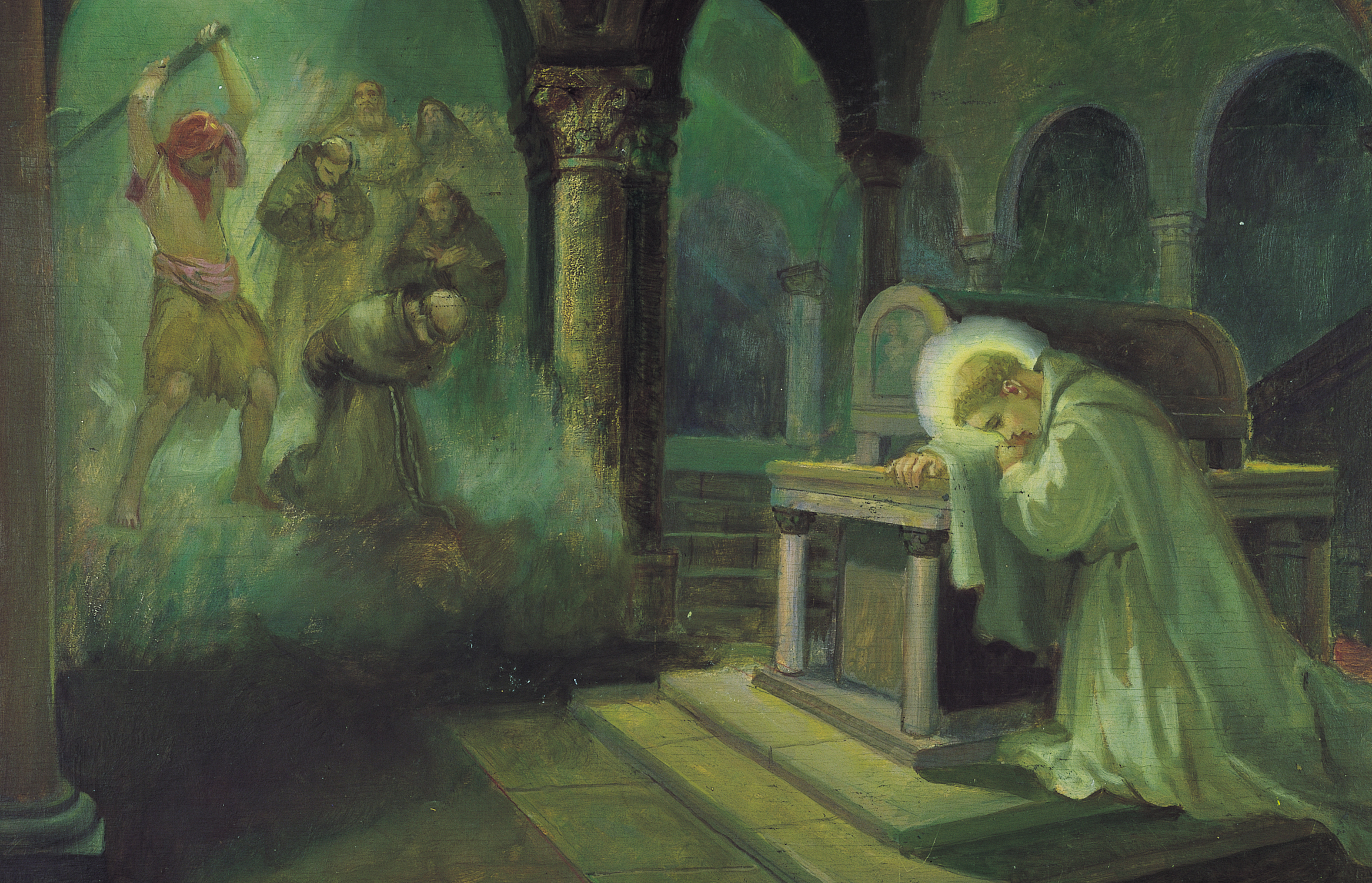
Then, in February of 1220, news arrived that five of his Franciscan friends had been martyred in Morocco. Their remains had been gathered together and sent to Portugal where they were being venerated as relics of martyrs of the faith. The king ordered them to be placed in the Church of the Holy Cross in Coimbra. Throughout this time, Ferdinand meditated on the heroic response of his Franciscan friends, and how their call to serve brought them to death. He wanted to emulate their example, leave everything, and follow Him.
Ferdinand became a Franciscan and began to learn the teachings of their holy founder, St. Francis. With his decision to become a Friar, Ferdinand also took a new name, Anthony. This was in honor of the hermit St. Anthony of the desert to whom the Franciscan hermitage is dedicated.
Service Abroad
In one of his first acts as a Franciscan, Anthony set off with another brother to die as a martyr in Morocco. He had barely arrived when he contracted a horrible fever which left him semiconscious for weeks. He did not even have the strength to stand up, let alone go into the market place to preach the Word of God.
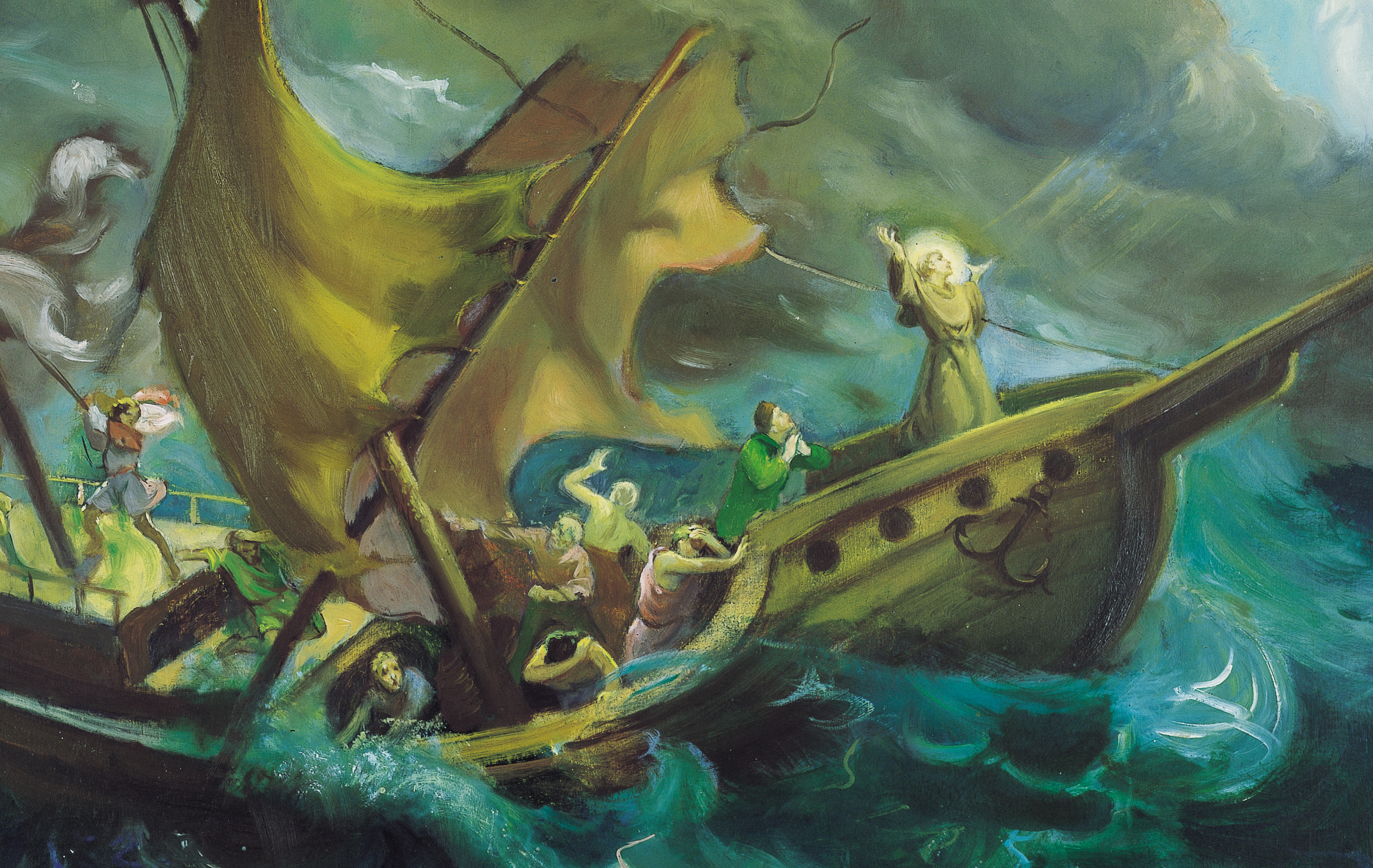
St. Anthony felt his generous dream of serving the Lord with his words and his very life had been crushed. There was only one thing left to do: surrender to the will of God.
And so Anthony said farewell to his beloved Africa, and set sail to return to Portugal. But, even this choice would be challenged by the Lord. His ship encountered a terrible storm which blew it off course.
Finally, the ship was forced ashore on the island of Sicily. Weak and confused as to the direction that the Lord intended for him, St. Anthony traveled to Assisi where there was to be a great chapter of the friars. On the feast of Pentecost in 1221 thousands of friars gathered in Assisi from all over Europe in what has come to be known as the Chapter of Mats. There, Anthony listened to the teachings of St. Francis, and was greatly consoled. As the friars disbursed to go home to their friaries, Anthony waited for someone to give him a sign of where he should go. Finally, the Provincial of Bologna, Friar Graziano, invited Anthony to follow him.
St. Anthony of Padua, the Preacher
In only a short time, St. Anthony had traveled from Coimbra in Portugal to the shores of Morocco, then to Sicily, then to Assisi, and finally to a small hermitage in Montepaolo. There, at last, Anthony found the peace which he had sought for so long. He immersed himself in his priestly service to the community as well as in household tasks of cooking and cleaning.
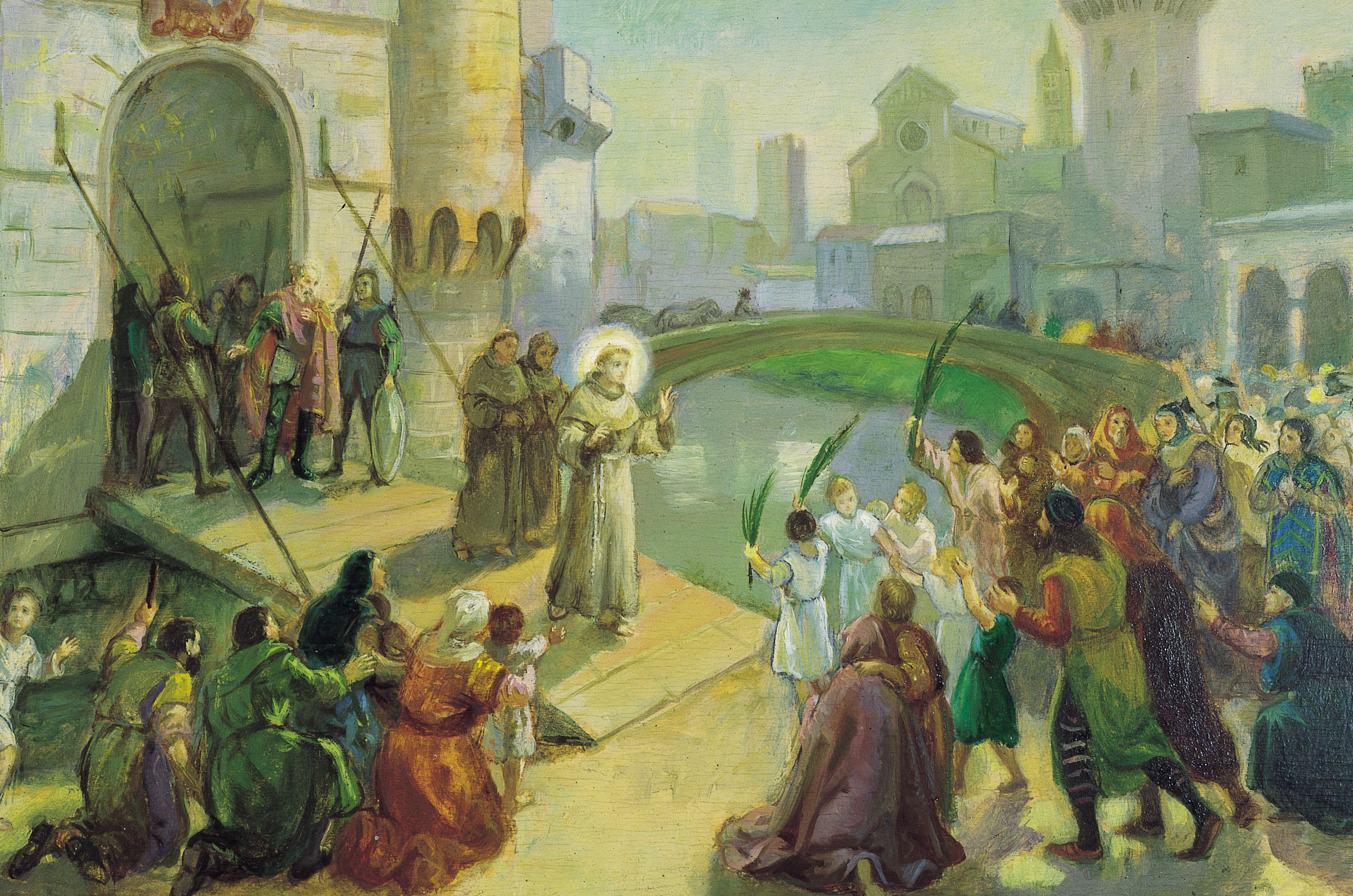
Oday he was asked to attend an ordination in the city of Forb. The preacher failed to arrive, and Friar Graziano, St. Anthony’s provincial, asked him to preach. All were astounded when St. Anthony spoke with both great learning and fervor. His inspirational ways earned him many opportunities to preach near and far. His life of retreat in the hermitage had come to an end.
St. Anthony traveled throughout Northern Italy and Southern France, preaching especially in the areas that had been plagued by heresy. He encouraged congregants and listeners to combat the abuses and heretical positions that had caused many to lose their faith. Throughout this time, he continued to live out the Gospel, giving the example of what he preached and confounding heretics and nonbelievers.
A Light in the Darkness
On one occasion, St. Anthony traveled to the city of Rimini, a hotbed of heresy. The city leaders had ordered everyone to ignore him, so no one turned up for his homilies. It was often the case that wherever St. Anthony went, he was greeted by silence.
St. Anthony walked along praying and reflecting upon what had happened. As he walked outside of the town, he came to the mouth of the Marecchia River where it flows into the Adriatic Sea. There, he began to address the crowds. But, these crowds were not people. They were fish.
He is said to have called out, “Fish of the river and sea, listen to the Word of God because the heretics do not wish to hear it!” Suddenly, there were thousands of fish, all pushing their heads through the surface of the water, straining to hear Anthony’s words.
The people of Rimini, seeing this miracle, gathered to listen to Anthony. What began with simple interest in an extraordinary event turned into a passionate conviction that Anthony was speaking to their very hearts. They were so moved by Anthony’s words, by his call to conversion, that they abandoned their hardened positions and returned to the Church.
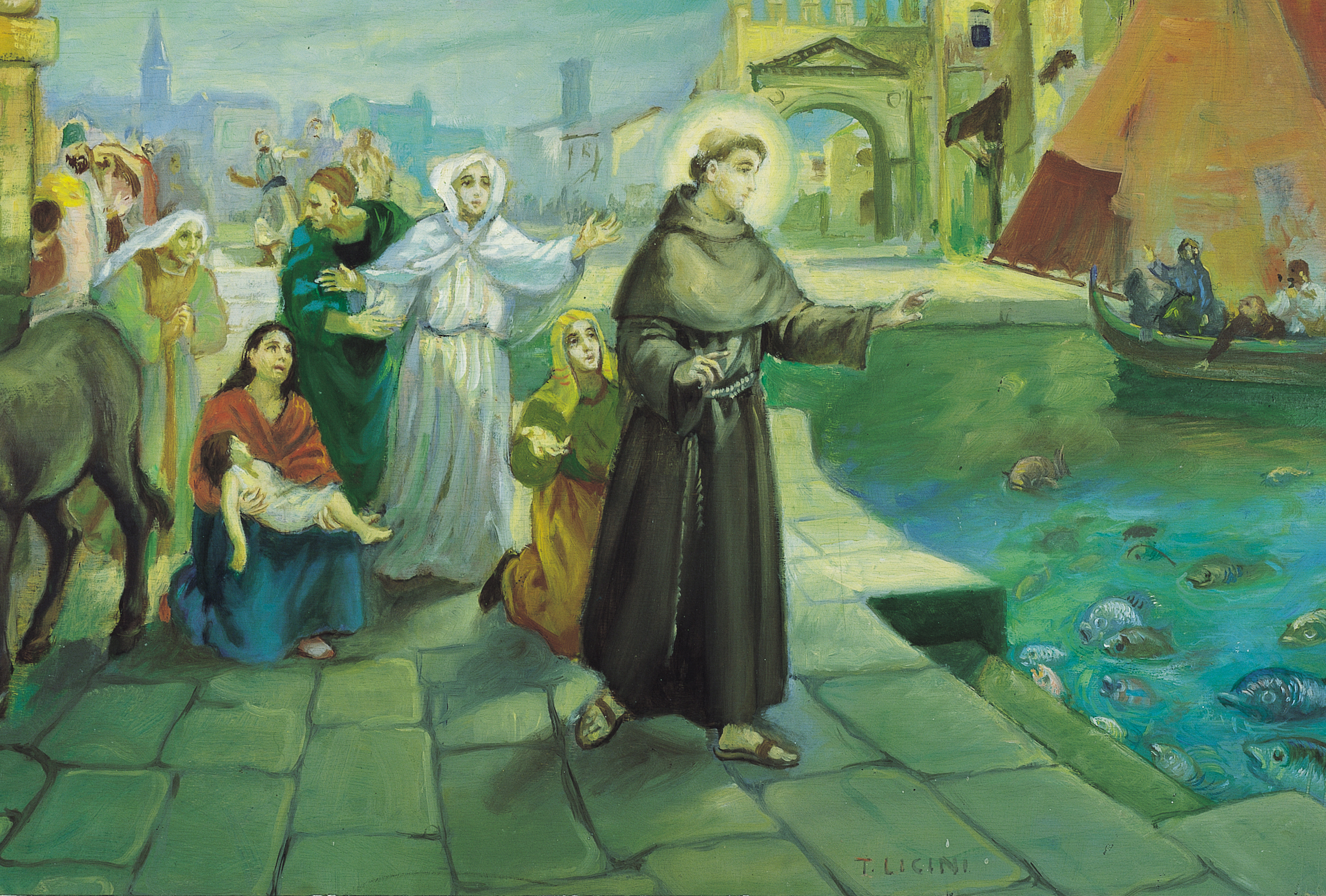
Miracles of St. Anthony
The Miracle with the Mule
One of the reasons why St. Anthony worked so hard to convert heretics was because he genuinely felt pity for them. He saw that they were depriving themselves of the most precious gift of the Eucharist, and he believed that no one could long survive without this spiritual nourishment.
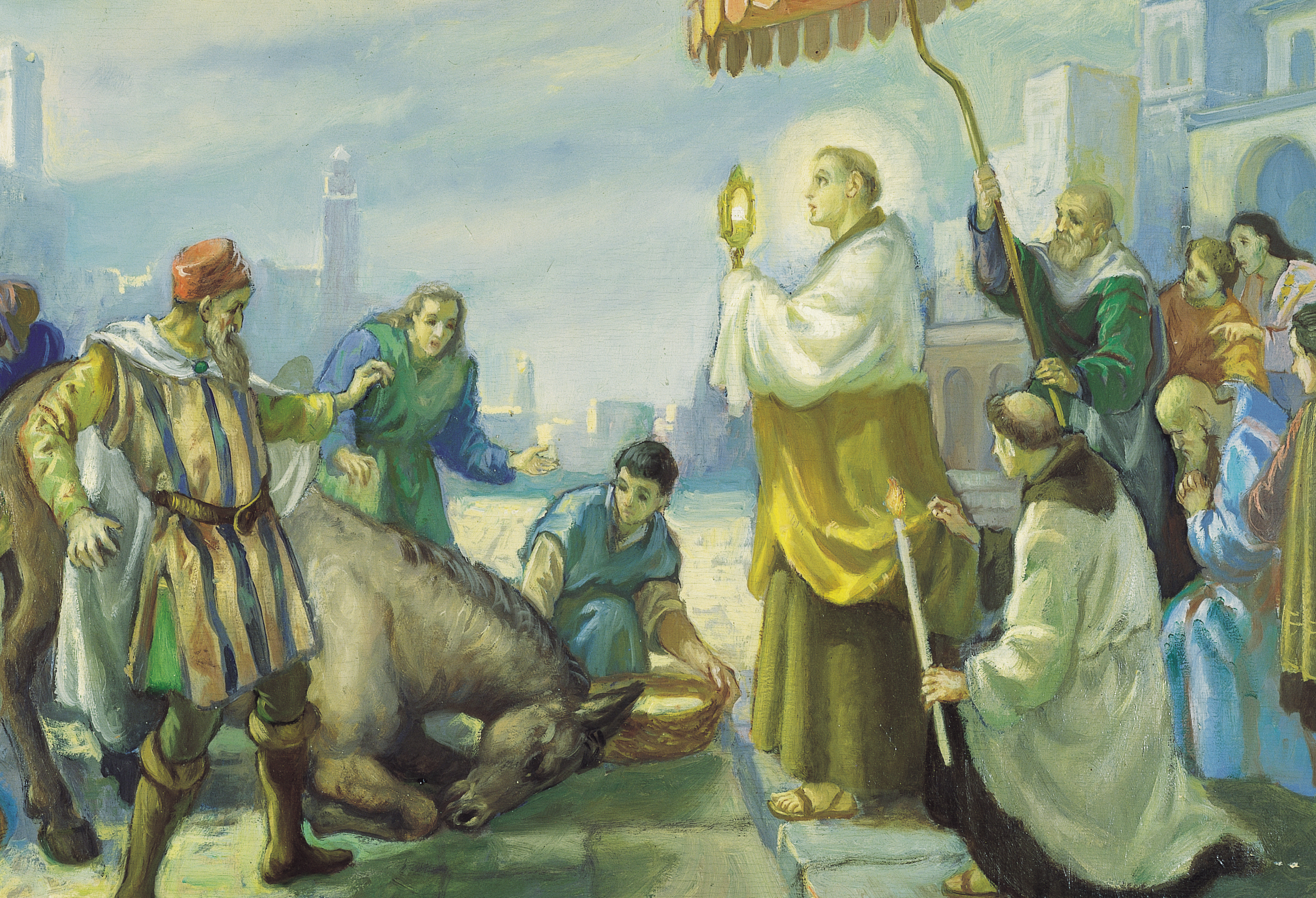
One day, a heretic told St. Anthony that he would believe that Christ was truly present in the Eucharist only if his mule bowed down to it.
A test was designed to see if the mule would recognize the presence of Christ. The test should take place in three days, during which time the heretic starved his mule.
When the appointed time arrived, St. Anthony stood off to one side with the Blessed Sacrament in his hands, while the heretic stood to the other side holding some food for the mule to eat. The mule ignored the fact that it was starving and it went over before Jesus and knelt down to adore the Blessed Sacrament.
The Miracle of Healing
One time a young man confessed to kicking his mother. Anthony, horrified at the lack of respect that the young man had shown his mother, told him that anyone who would kick his father or mother should have his foot cut off.
Interpreting Anthony’s words literally, the young man went home and cut off his foot with an ax. Called by the man’s hysterical mother, Anthony came to the young man’s house. Imploring God’s help, Anthony miraculously reattached the man’s foot.
There are many other miracles associated with St. Anthony’s ministry, but they should not distract our attention from the fact that most of his ministry was performed in simple everyday ways. It was his fervent lifestyle, prayer, gentleness, and humble use of his great learning that brought people to conversion. Anthony also ministered to those who were ministering to others, for he taught theology to the friars in Bologna, Montpellier, Toulouse and Padua. His work and writings have earned him recognition as one of 36 Doctors of the Church.
Anthony and the Christ Child
By 1231, the many journeys he had made and the many illnesses he had suffered had taken their toll. Anthony was suffering from dropsy, and his strength had all but failed him. All throughout Lent of 1231 he preached to ever increasing crowds in Padua, but his preaching and the endless hours of confessions left him prostrate. Around this time, Anthony had a premonition of his approaching death.
The friars invited Anthony to go to Camposampiero, a town not far from Padua, so that he might recover his strength. Count Tiso had been one of the unscrupulous politicians seen in the previous account, but after hearing Anthony preach, he converted and donated a plot of land to the friars on which a friary was built.
The ground was damp at this time of year, and it aggravated Anthony’s illness. This problem was solved when the friars noticed that Anthony admired an immense walnut tree on the property. They told Tiso about it, and he had a small tree house built in the walnut tree for Anthony.
One night Count Tiso was passing by Anthony’s room when he was attracted by a powerful light. At first he thought that it must be a fire, and so he burst into the room. There he saw Anthony in ecstasy embracing the Infant Jesus. Anthony begged Tiso not to tell anyone what he had seen, and Tiso respected the his wishes until after he died.
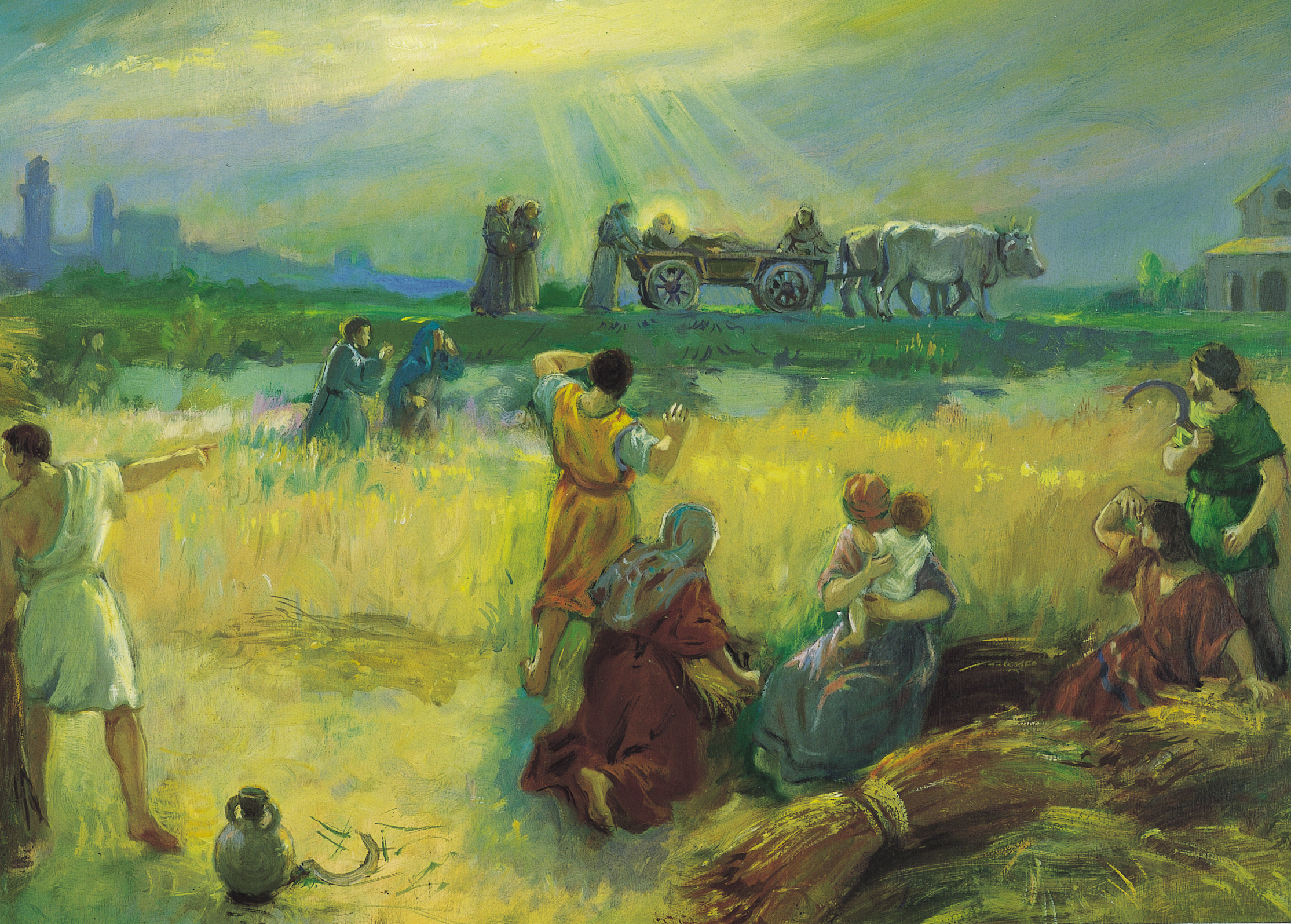
The care of Count Tiso and of the friars was not enough to bring Anthony back to health. On June 13, 1231, Anthony came down from his tree house to eat the noonday meal with the friars and he collapsed. As the friars supported him, he whispered he wished to be taken to Padua so that he might die there. He wanted to spend his last hours in the friary which he loved so much near the Church of Santa Maria.
The friars put him on a cart and traveled toward Padua, but Anthony was already too weak to make it. As they approached a Poor Clare monastery in Arcella, a town close to Padua, they decided that it would be best to take him there. After he was anointed by a priest, the friars at his bedside noticed St. Anthony was gazing attentively at something. St. Anthony said, “I see my Lord.” Shortly after, he died.
The friars tried to keep Anthony’s death a secret so his body would not be stolen, but almost immediately children were seen running through the streets of Padua calling out, “The Saint is dead! Friar Anthony is dead!” He was only 36, but he had traveled thousands of miles in his missions and preached to countless thousands of the faithful and converted.
The friars carried his body from Arcella, where he died, to the Church of Santa Maria. That same evening miracles began to occur at the site of the tomb. The fame which Anthony had acquired during his life was redoubled in his death.
The bishop of Padua, and Pope Gregory IX, immediately began to promote his canonization. St. Anthony was so well known and his holiness so universally attested that the investigation lasted less than a year. On May 30, 1232, Pope Gregory canonized St. Anthony of Padua.
The friars, the people of Padua, and the ever increasing number of pilgrims who flocked to the tomb of the Saint all worked together to begin construction on a majestic basilica. In 1263 the friars transferred St. Anthony’s remains into the new church built in his honor. When the casket holding his body was opened to verify its contents, the tongue and the vocal cords of the Saint, the instruments with which he had glorified God in so many homilies, were found to be intact.
One of the relics from his tomb is present in the Shrine of St. Anthony in Ellicott City, where the Companions of St. Anthony work today.

